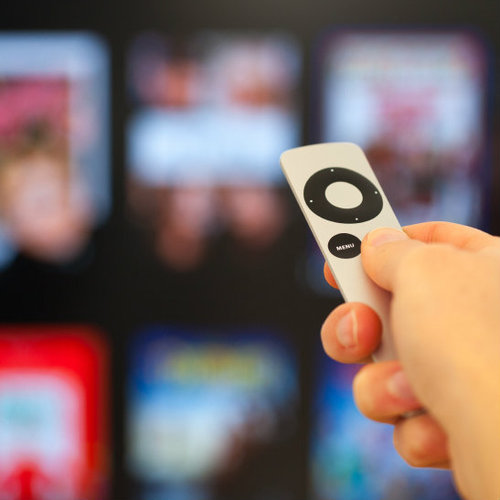As streaming penetration soars to record levels, consumers are expanding the number of OTT services they pay for rather than fleeing Netflix and other top incumbent services, MoffettNathanson study finds.

The entry of new, premium subscription VoD streaming services helped drive penetration levels to record highs in Q4 2020, with consumers also tacking on streaming services rather than leaving Netflix and other top incumbent services in the category, according to a new study.
The so-called "streaming wars" clearly center on a war of addition, rather than attrition, MoffettNathanson analyst Michael Nathanson proclaimed in his Q4 2020 "SVoD Tracker" report.
"[W]e continue to believe the 'streaming wars' narrative coined by the press is incorrect as we see consumers taking more services and products alongside established players like Netflix rather than increasing legacy Netflix churn," Nathanson wrote.
Figure 1:  Click here for a larger version of this image.
Click here for a larger version of this image.
Netflix subscribers, for example, are taking about three streaming services while HBO Max subs, who are more likely to have pay-TV subscriptions, are taking almost five SVoD services, according to an a study based on data from a HarrisX survey of 19,435 US respondents held between October and December 2020.
With new services such as WarnerMedia's HBO Max (12.6 million activations) and NBCUniversal's Peacock (26 million signups) making gains, "it is clear that streamers have yet to make the decision to replace Netflix in favor of another streaming product," Nathanson explained. "Early on, the once-hyped 'streaming wars' have been a war of SVoD vs. traditional platforms rather than a war amongst the SVoD services themselves. The streaming wars seem to be a war of addition (as in new services added) and not attrition."
Per the study, the pay-TV homes are now taking an average of 3.33 SVoD services while non-pay-TV homes average 2 SVoD services. That suggests consumers still in a traditional pay-TV bundle are either more able and/or willing to pay more for access to premium content, Nathanson noted.
Streaming penetration still rising
Bigger picture, streaming penetration of US households surged to 77% at the end of December 2020, 500 basis points (bps) higher than the year before, an indicator that existing SVoD services and newcomers are all growing their sub bases and expanding the overall streaming pie.
Figure 2:  Click here for a larger version of this image.
Click here for a larger version of this image.
"From the look of it, we are witnessing a re-acceleration of US penetration" as much of the country re-enters some form of self-quarantining this winter, Nathanson surmised.
Netflix, which has surpassed 200 million streaming subs worldwide, remains the dominant player, with penetration of 70%. Amazon Prime Video's penetration has ticked up to 52%, while Disney-owned Hulu and Disney+ were relatively flat, with respective penetration rates of 38% and 31%, according to the study.
Figure 3:  Click here for a larger version of this image.
Click here for a larger version of this image.
Apple TV+ fell 200 bps in Q4 as HBO Max grew 300 bps. HBO Max's recent rise indicates that it's getting some traction after a slow start, likely aided by WarnerMedia's decision to distribute its full 2021 movie slate concurrently on HBO Max and in theaters, Nathanson pointed out.
Promotional churn concerns
Several of the relatively new streaming services remain exposed to promotional churn. The study found that 16% of Disney+ users were accessing it through Disney's deal with Verizon, while 23% of HBO Max subs got it through AT&T's promotion centered on certain customers on its mobile, video and broadband plans. It's worse for Apple TV+ – a majority (62%) are getting it under a promotion.
"As always, we wonder what Apple TV+ does to stand out in an increasingly competitive and crowded field," the analyst explained, noting that the concern is even more acute should there be a slowdown in the device cycle and Apple TV+ users choose not to renew on their own.
The study paints a dim picture – just 30% said they intend to renew Apple TV+ when promotions lapse. That compares to 48% among Disney+ users.
Among other tidbits from the study, around 50% to 60% of consumers subscribing to a top streaming service also have a pay-TV subscription.
HBO Max and Peacock both had high penetration of subs who also get pay-TV (65% and 60%, respectively), no doubt driven by their initial strategies that favor distribution with pay-TV partners rather than their standalone streaming services.
WarnerMedia's focus early on is to convert its existing HBO sub base to HBO Max, while Peacock has leaned heavily on offering its ad-supported, premium tier to existing pay-TV subs for no added cost with corporate cousin Comcast and other pay-TV providers.
Hulu, meanwhile, has the lowest concentration of pay-TV subs, at 48%, according to the study.
Related posts:
— Jeff Baumgartner, Senior Editor, Light Reading
About the Author(s)
You May Also Like




.jpeg?width=300&auto=webp&quality=80&disable=upscale)






